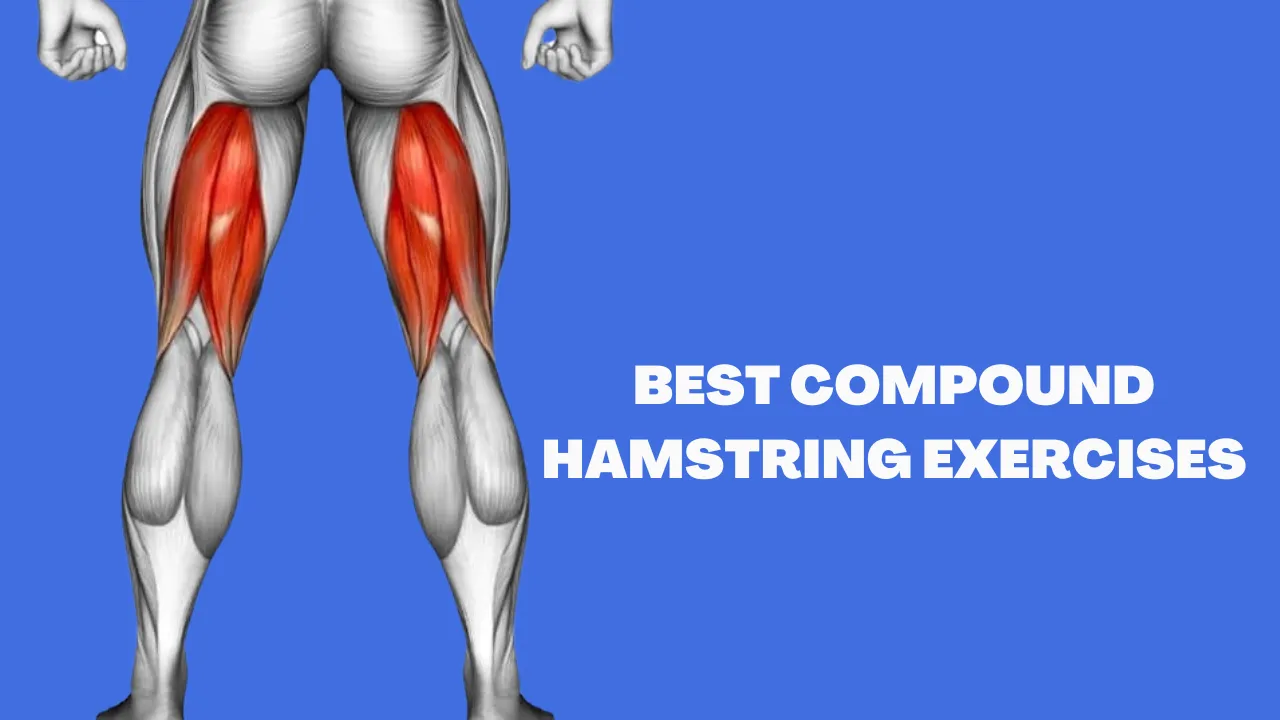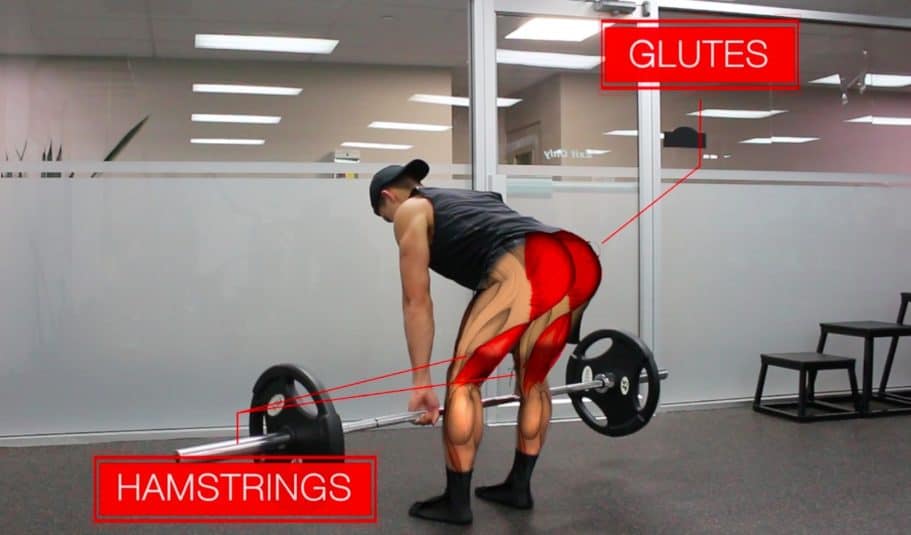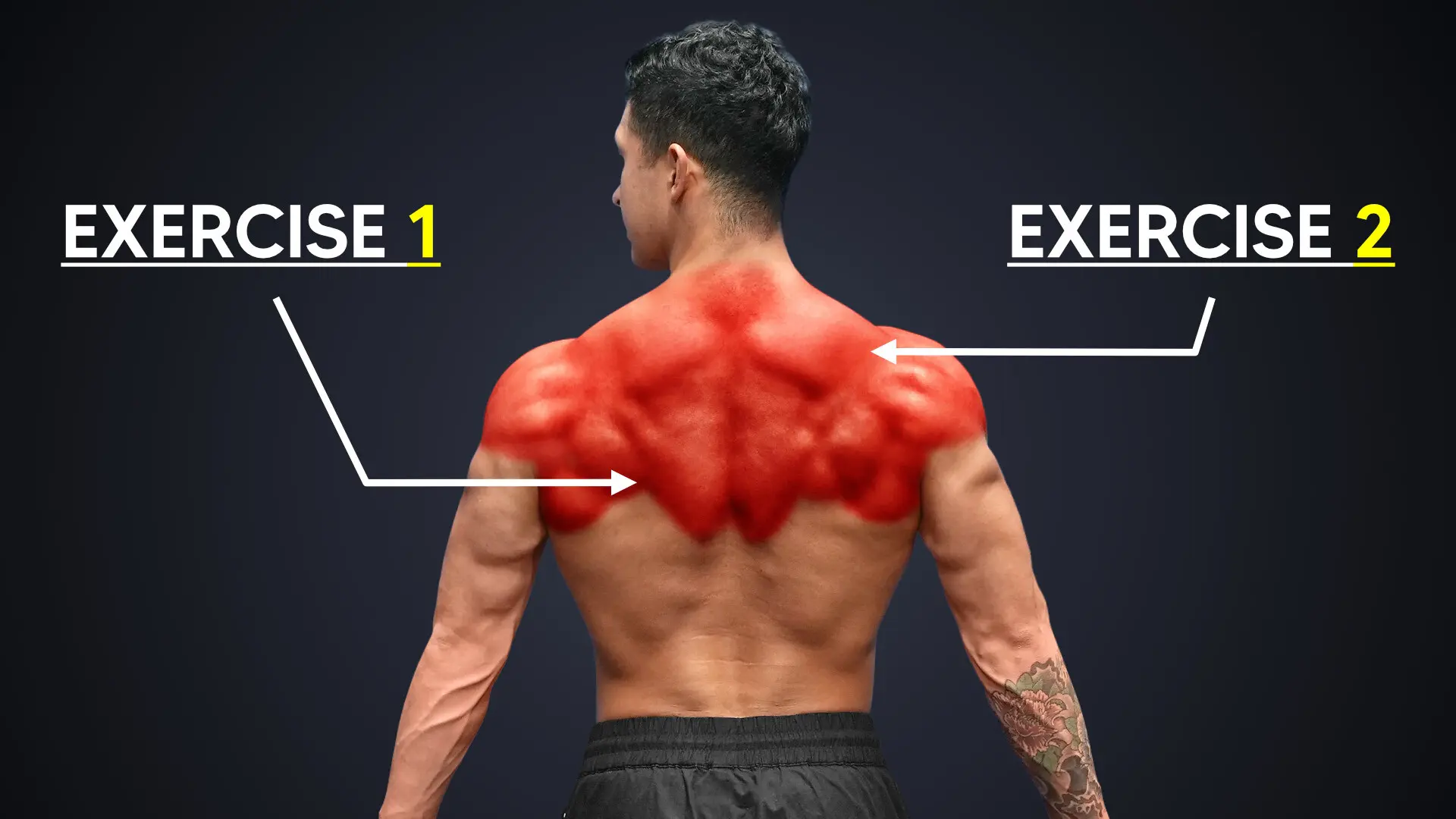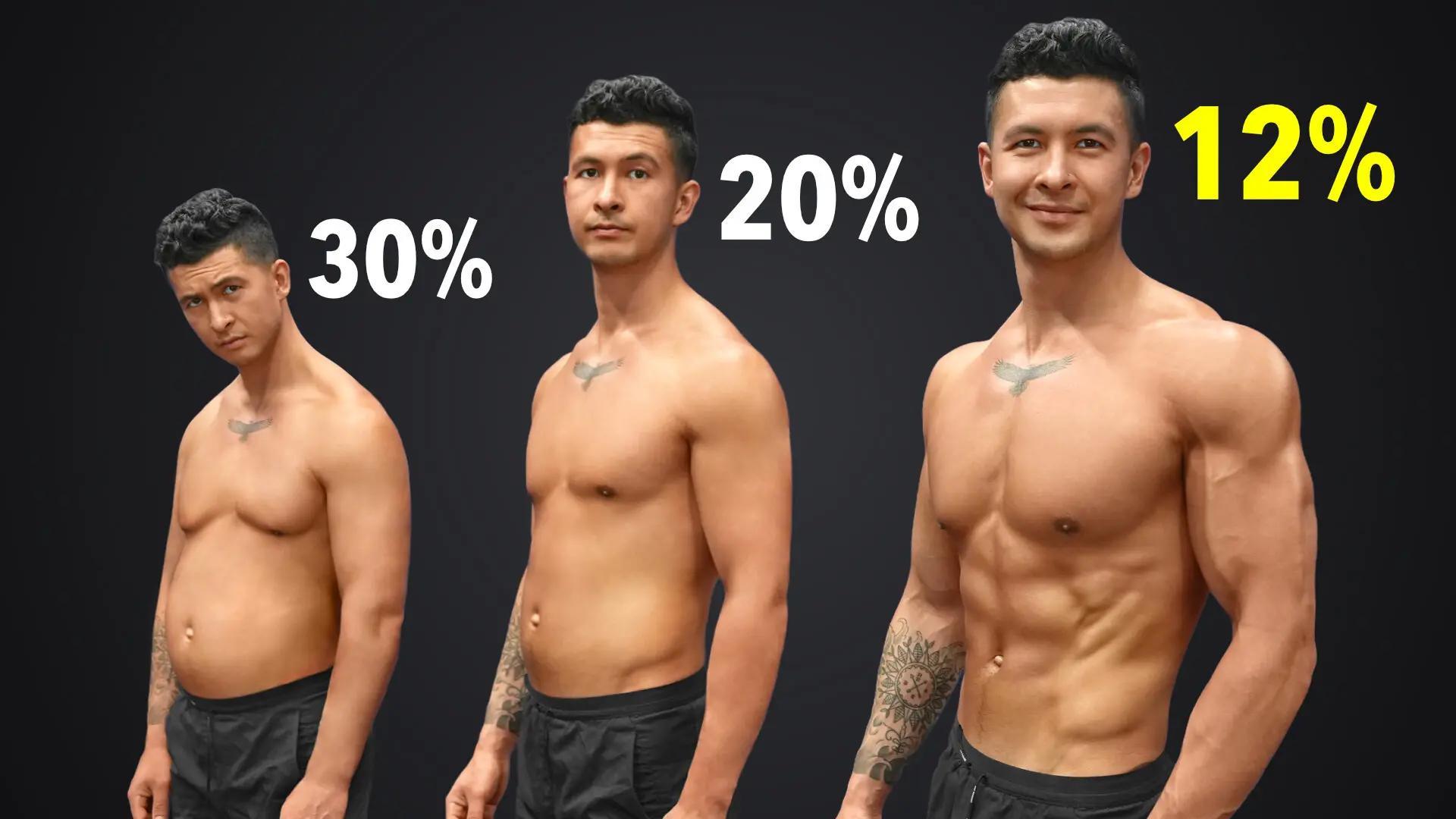
What Are The Best Hamstring Compound Exercises?
What Are Compound Hamstring Exercises?
To understand what compound hamstring exercises are, you’ll first need to know what compound exercises are in the first place. Now, all strength training movements are split into 2 main categories:
- Compound exercises: These work multiple muscle groups across multiple joints.
- Isolation exercises: Single-joint movements that tend to work 1 specific muscle group in isolation.
Compound hamstring exercises are thus movements that target multiple muscle groups — including the hamstrings plus 1 or a handful of others — across multiple joints. Examples include the deadlift (regardless of variation) and the glute ham raise.
On the other hand, the seated leg curl is a great example of an isolation hamstring exercise.
Benefits Of Compound Hamstring Exercises
One exercise, multiple muscle groups: if, right off the bat, you thought, “Hmm … sounds like compound exercises fare way better than isolation exercises at growing muscle?”
You’re somewhat on the right track.
When sets and reps are equated, compound and isolation exercises do equally well at eliciting hypertrophy in a specific target muscle group.
OK, let’s make that less abstract. Assuming you pick weights that help you leave 2 reps in reserve (or, in other words, 2 reps shy of failure) and complete 3 sets of 12 reps of either:
- Conventional deadlifts, or
- Seated leg curls
… you’d see similar hamstring gains regardless of whether you did #1 or #2.
That said, if we were to zoom out and look at muscle growth in other muscle groups, 1 key benefit of compound hamstring exercises over isolation ones becomes clear. Think about it: conventional deadlifts do not only work the hamstrings. They also target your glutes and, to some extent, quads.
Meaning?
Compound hamstring exercises offer a time-efficient way of working your legs (or “posterior chain”).
Beyond the time-efficiency bit, another benefit compound hamstring exercises have over isolation ones is that they tend to be more “functional”.
They better mimic your body's everyday movement patterns — e.g., when you have to safely lift something heavy off the ground, such as a pail of dirty water (deadlift). Can you think of an everyday movement pattern that only involves knee flexion, like with seated or lying leg curls?
Wait. So, does this mean isolation hamstring exercises (or isolation exercises in general) don’t deserve a spot on your workout routine? Like, at all? Of course not.
But why? When they work fewer muscle groups at a time and score poorly on functionality?
You'll have to stay on the edge of your seat for a little longer because first, I want to talk about 5 of the best compound hamstring exercises you need to know.
Top 5 Compound Hamstring Exercises
Here’s a brief overview of your hamstring muscles. Yes, plural — because your hamstrings are made up of 3 muscles:
- Semitendinosus
- Semimembranosus
- Biceps femoris (which, just like your arm biceps, consists of a short and long head)
And just like your quads, the hamstrings are a biarticular muscle group that crosses your hips and knees. I.e., they help with hip extension and knee flexion. So, below, you’ll find a mix of hip-extension and knee-flexion-based hamstring compound exercises.
#1: Conventional Deadlift

Equipment needed: Barbell
What’s special about this exercise?
Compared to the sumo and trap bar deadlifts, the conventional deadlift features more of a hip hinge pattern, which makes it more hamstring-focused.
In addition to targeting the hamstrings really well, the conventional deadlift is also a well-rounded posterior-chain compound exercise that:
- Favors the lower glutes, and
- Activates all back muscle groups, from the upper back to the lats
Deadlifts can be a tricky (and sometimes dangerous) exercise for many people.
So, I'd suggest cleaning up your deadlift form before attempting the heavy weights.
A few quick pointers include stacking your ribs and hips evenly on top of each other, bracing your core, and controlling the eccentric movement. For a more in-depth tutorial, check out this article I wrote on proper deadlift form.
#2: Romanian Deadlift

Equipment needed: Barbell
What’s special about this exercise?
Think about what happens during the descent with conventional deadlifts.
As soon as the bar passes your kneecaps, you’d bend your knees and slide the bar along your shins to get the barbell back over your mid-foot to the “starting position”.
This limits the amount of tension placed on your hamstrings when they're fully stretched, which is not optimal. That’s because research (e.g., this, this, and this) now shows that exercises that help stretch your muscles to a greater degree tend to lead to more muscle growth.
Psst: click here to learn more about stretch-mediated hypertrophy and what it means for your training.
In the meantime, back to Romanian deadlifts: since you’re focused on getting the maximal hip extension with minimal knee flexion through the eccentric portion, RDLs could help you see better growth and development in the hamstrings than conventional deadlifts.
#3: 45-Degree Hyperextension
Equipment needed: Back extension machine
What’s special about this exercise?
As with the conventional and Romanian deadlifts, the 45-degree hyperextension is a hip hinge movement pattern that helps to target the hamstrings.
This exercise is particularly suitable for beginners because it’s a relatively safe exercise (provided you do it unloaded).
According to Bret Contreras in a past glutes article, you should point your feet straight and keep your back neutral throughout the movement to maximize hamstring activation on these.

#4: Glute Ham Raise

Equipment needed: Glute ham developer machine (GHD)
What’s special about this exercise?
Remember what we said about the hamstrings being a biarticular muscle group?
So far, all 3 exercises we've mentioned are hip-extension-based: conventional deadlifts, Romanian deadlifts, and the 45-degree hyperextension.
For well-rounded hamstring development, we’ll also need knee-flexion-based exercises — which is where the glute ham raise comes in. The glute ham raises can be tricky to get right, so here's a cue that may help.
Maintain a straight line through your knee, hip, shoulder, and neck throughout the movement. Do not hyperextend through the lumbar spine.
Still struggling with the exercise?
TBH, many people struggle with the glute ham raises even if they’re doing it without weights. That’s because you’re still trying to curl the weight of your entire upper body with just your hamstrings; if you’re a beginner and/or your hamstrings are simply not strong enough, you’d find the movement nearly impossible.
So, what's an alternative knee-flexion-based exercise, then? Well, there's the seated leg curl … which, yep, you're right, is an isolation exercise. But more on this later.
#5: Sliding Hamstring Curl
Equipment needed: N/A
What’s special about this exercise?
Don’t have access to equipment? If you’re working out from home, a knee-flexion-based compound hamstring exercise you could do is the sliding hamstring curl.
To perform these:
- Lay on a smooth surface and place your feet on something that’ll let them slide easily (e.g., a piece of towel or plastic bag)
- Then, use your hamstrings to curl your heels towards you while raising your hips into the air. Your back should remain straight as you do so.

To progressively overload this, you can slow down the tempo and/or perform them with one leg at a time.
Common Mistakes To Avoid When Performing Compound Hamstring Exercises
A few mistakes to avoid when performing compound hamstring exercises include:
- Aiming for range of motion without accounting for mobility: This applies to the Romanian deadlift. Yes, the stretch is important — but you should only lower the weight as far as your mobility allows you to (otherwise, you're just rounding your back and shifting the tension away from your hamstrings to the lower back). This is the point at which the hips stop moving backward on the way down.
- Allowing the weights to stray too far in front of your body: With the conventional and Romanian deadlifts, you’d want to keep the barbell as close to your body as possible (this may lower your risk of a lower back injury or lower back pain in general).
- Sacrificing form for weight: Adding more weights to your hamstring compound exercises may feel good … but make sure all that extra load isn’t compromising your form (because if it is, you’re not truly progressively overloading and, worse, you’re increasing your injury risk).
- Not pushing close enough to failure: You must push yourself close enough to true failure on the hamstring compound exercises for optimal muscle growth. I've done this in my own training routine and quickly saw my fastest gains since the early days (learn what else I changed in my training plan to build muscle fast here).
How To Incorporate Compound Hamstring Exercises Into Your Workout Routine
Here are a few sample workout routines:
Workout A
#1: Conventional Deadlift (3 sets, 8 to 12 reps)
#2: 45-degree Hyperextension (3 sets, 8 to 12 reps)
#3: Glute Ham Raise (3 sets, 6 to 8 reps)
Workout B
#1: Romanian Deadlift (3 sets, 8 to 12 reps)
#2: 45-degree Hyperextension (3 sets, 8 to 12 reps)
#3: Glute Ham Raise (3 sets, 6 to 8 reps)
Now, here’s a disclaimer.
Simply relying on compound hamstring exercises to grow your hamstrings isn’t optimal. As mentioned earlier, you’ll need a mix of hip flexion and knee extension exercises for well-developed hamstrings. But the issue is that the knee-flexion exercises mentioned in this article aren’t the most realistic options, especially if you’re a beginner.
The glute ham developer machine, for example, is rarely found in most gyms.
And even if your gym miraculously has it, the exercise requires you to curl your body weight right from the get-go — it’s challenging.
Instead, the seated leg curl, an isolation exercise, is a much better knee-flexion exercise option for your hamstrings. Beyond being a super common machine in most gyms, this isolation exercise also helps build strength in your hamstrings with much lighter loads. Major score.
But … how should you pair isolation exercises with compound ones for the most growth possible? How often should you train? How many sets and reps should you do?
If you're looking for a science-based training program that shows you exactly what to do to transform your hamstrings (and overall physique!) in the most time-efficient way possible, check out Built With Science programs.
To discover the best BWS program for you and your body, take my free analysis quiz below:
Click the button below to take my analysis quiz to discover the best program for you:
↓




